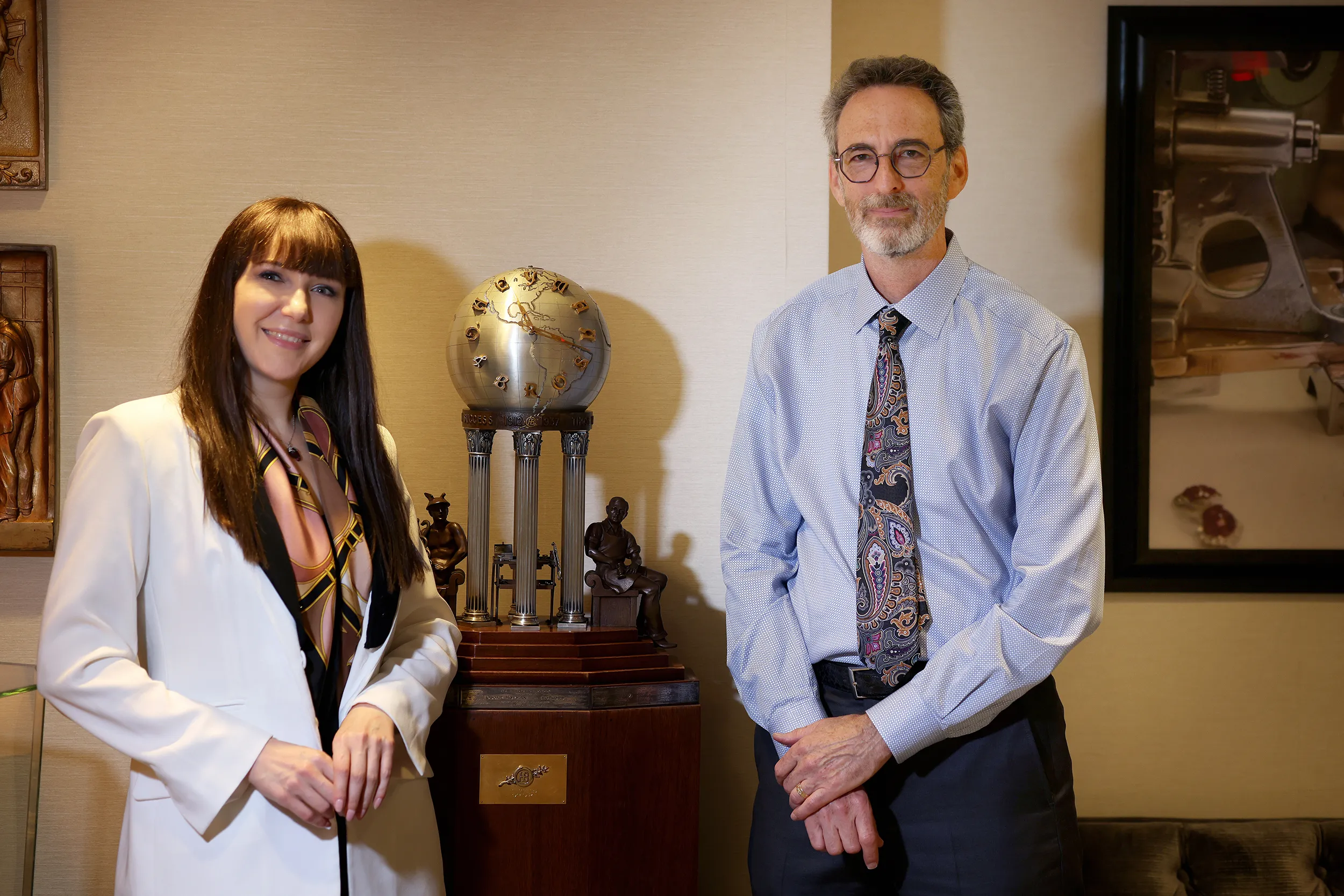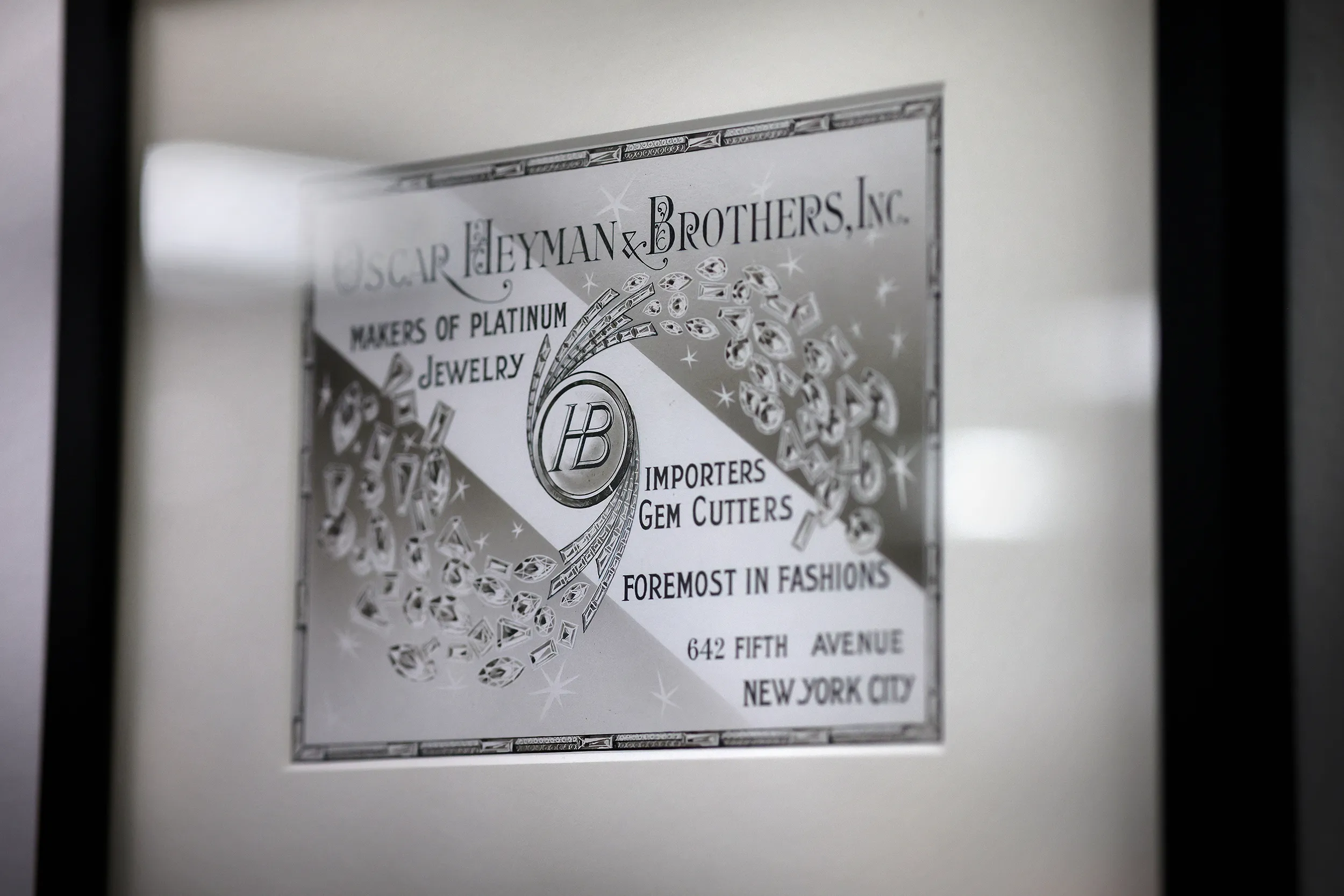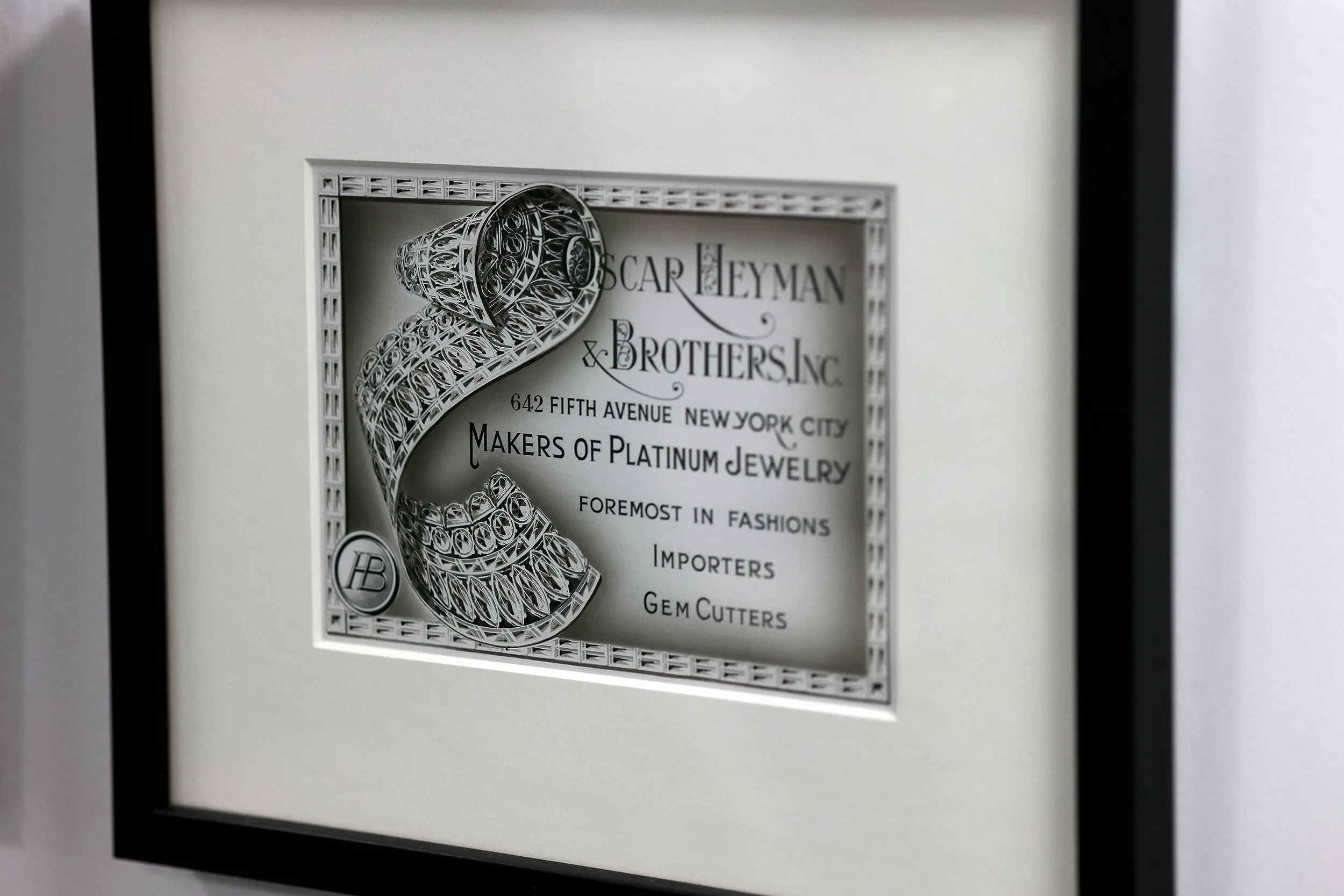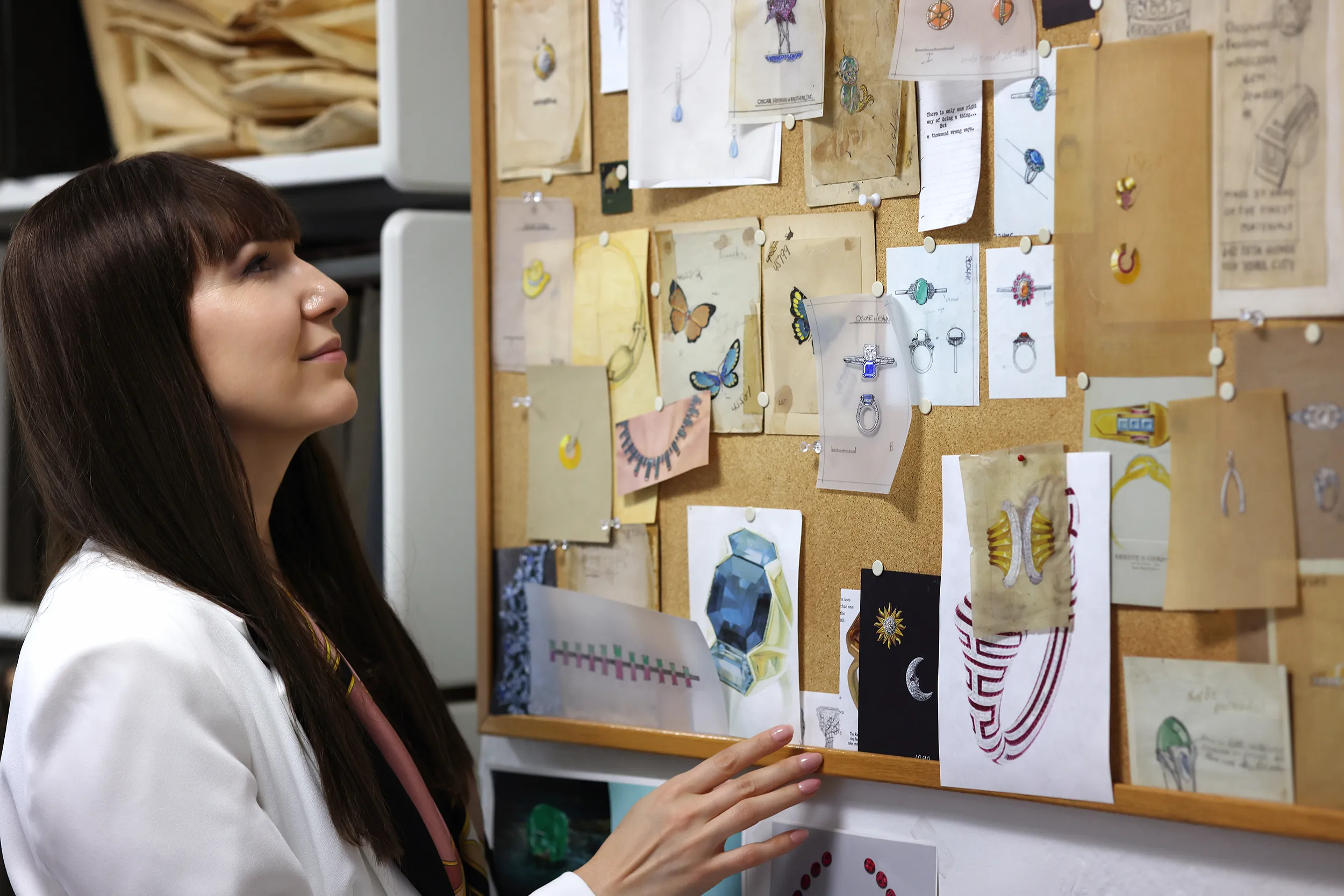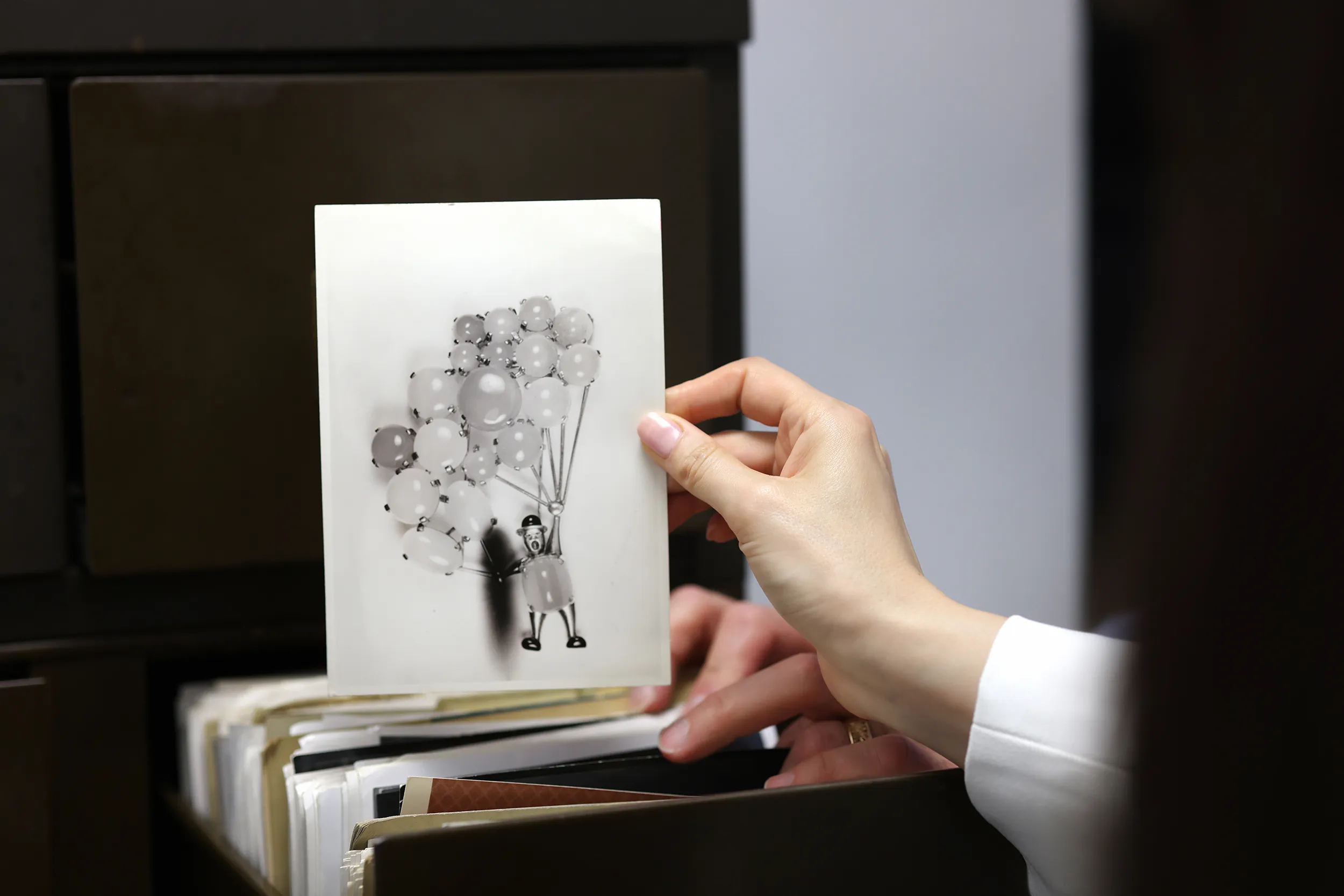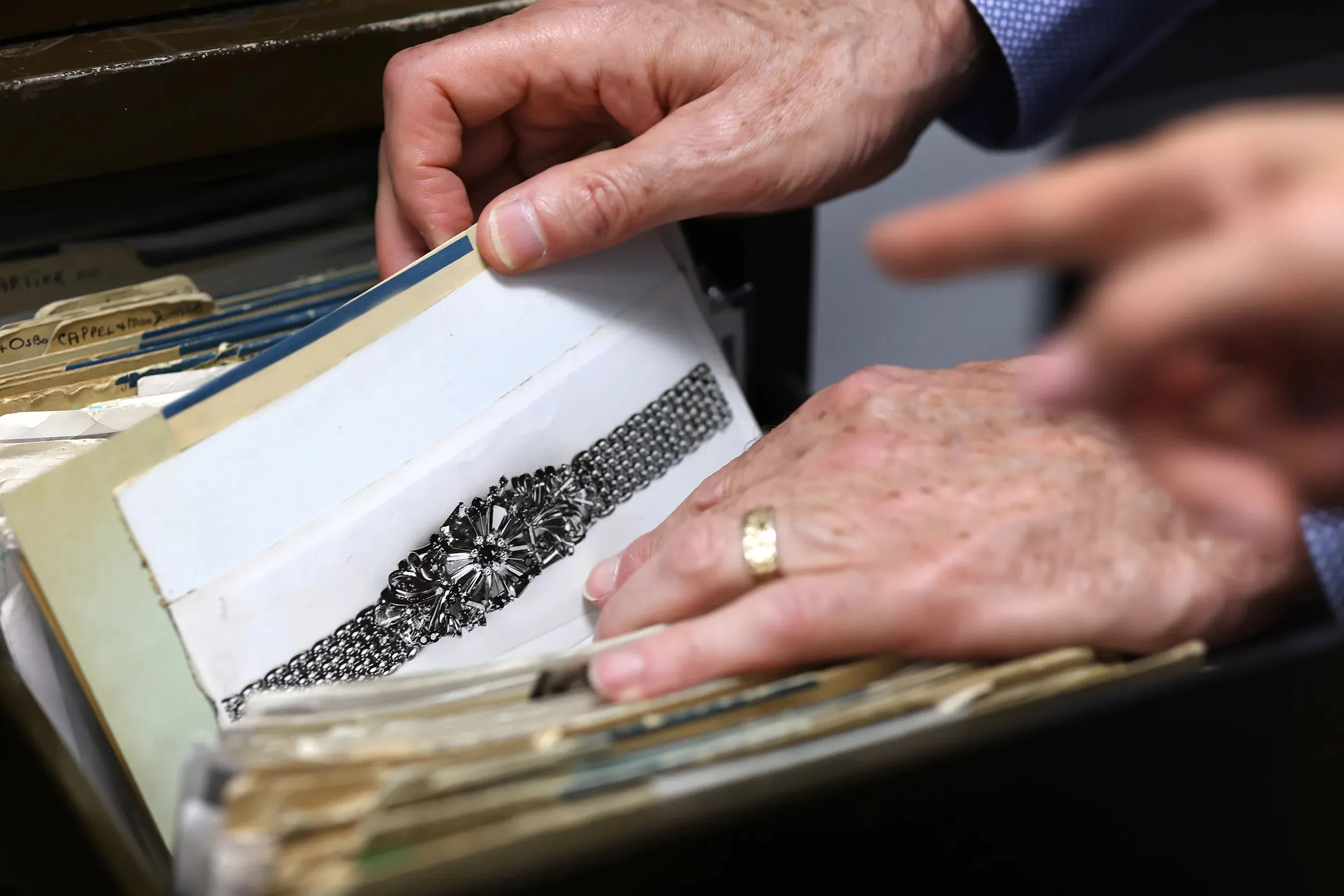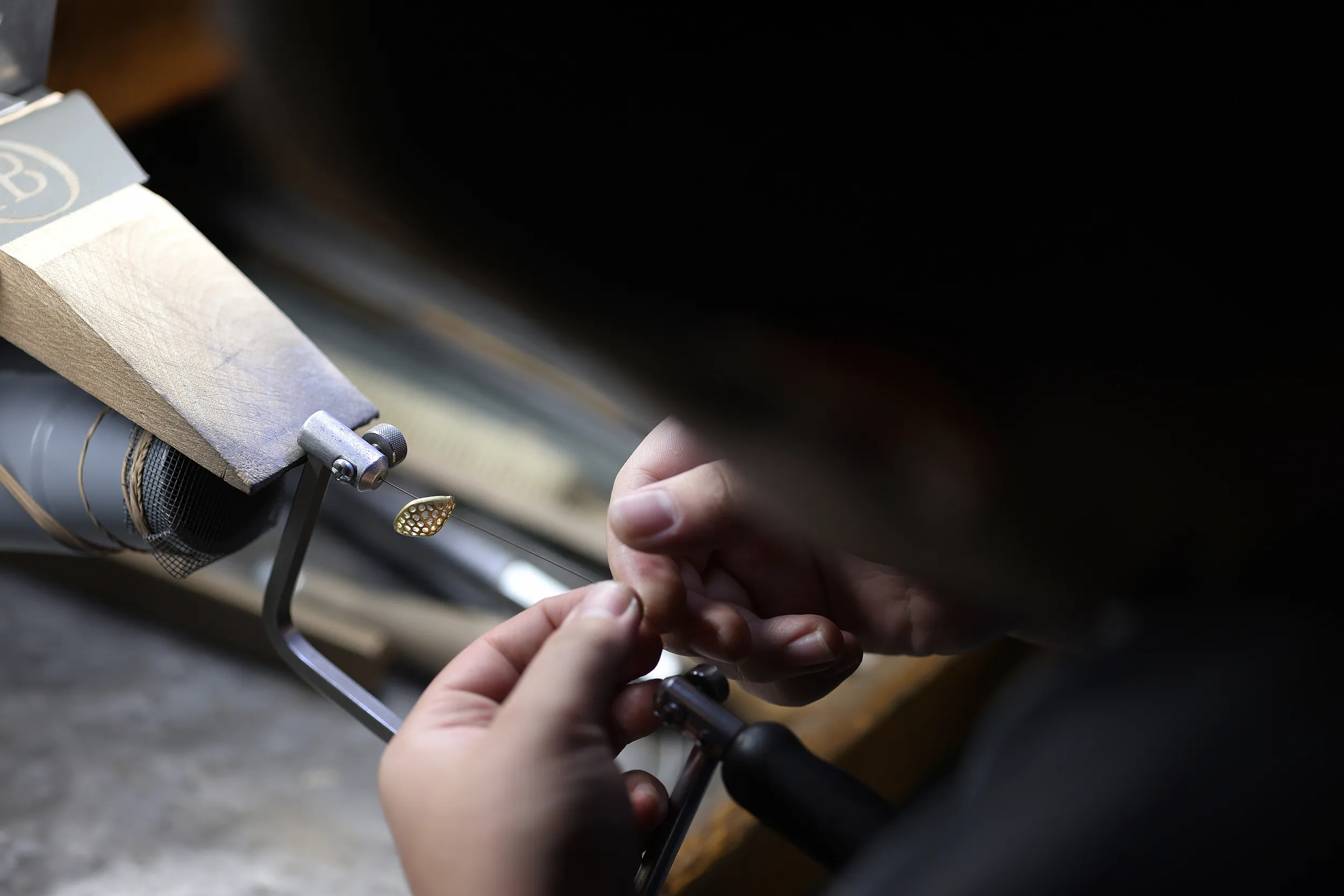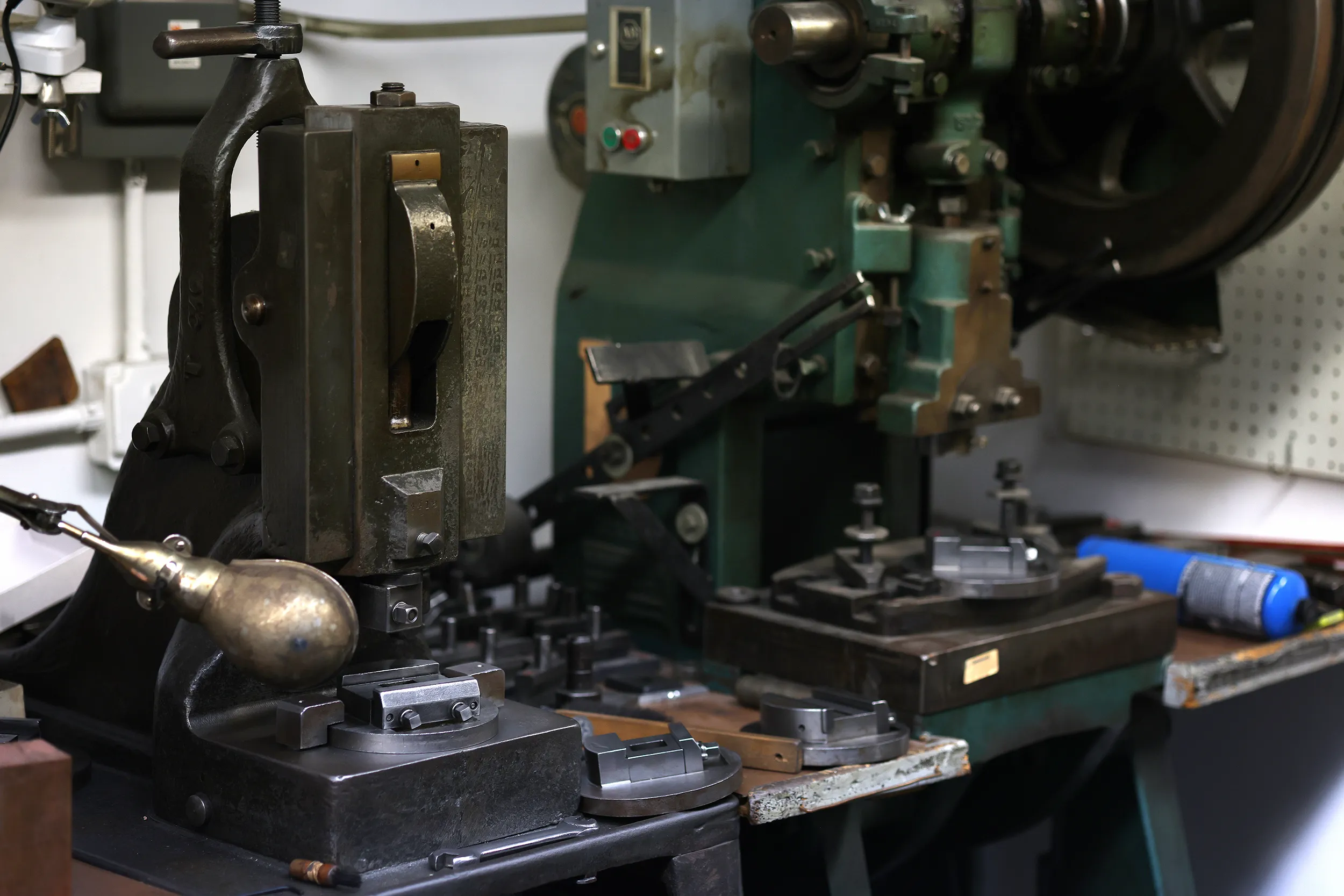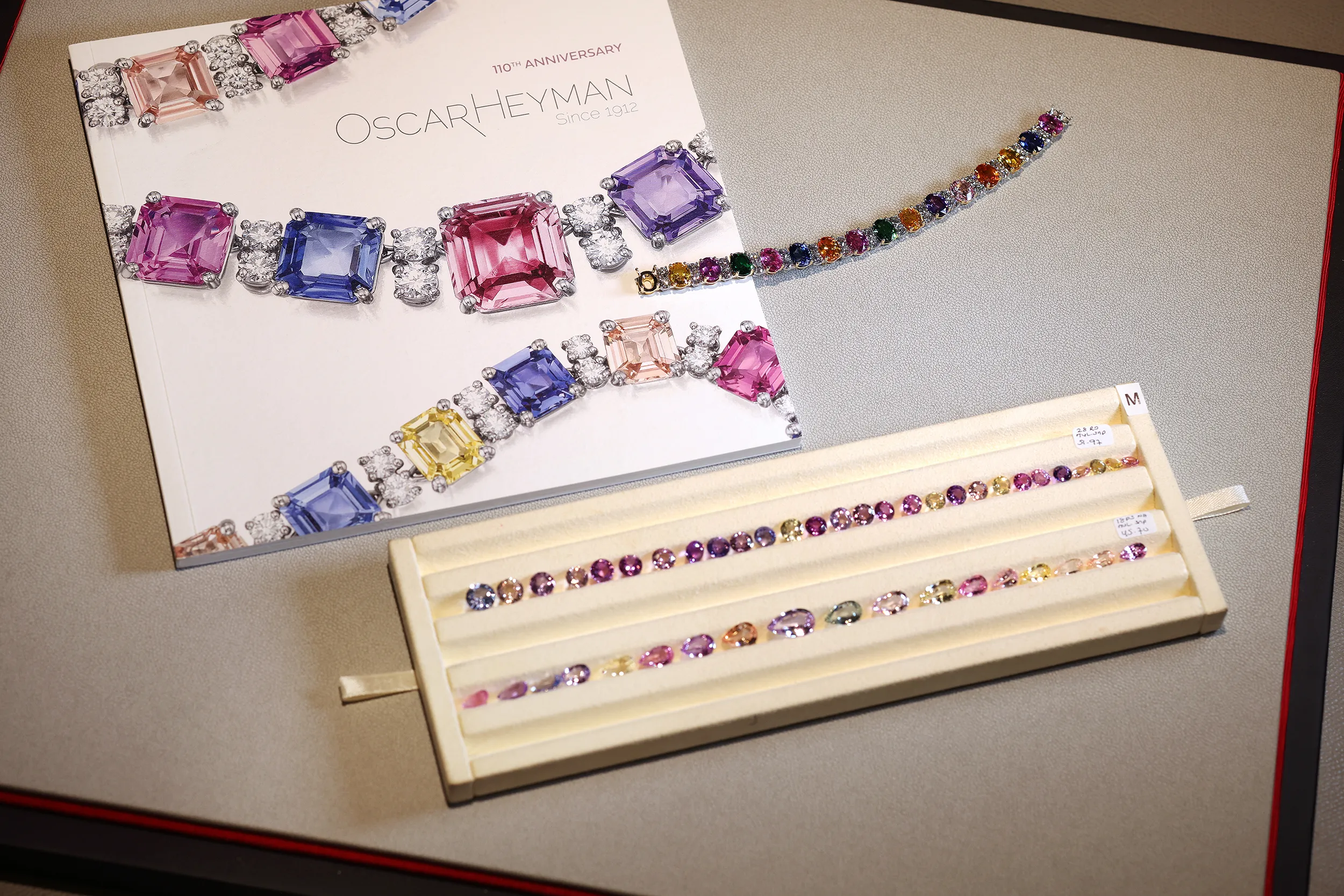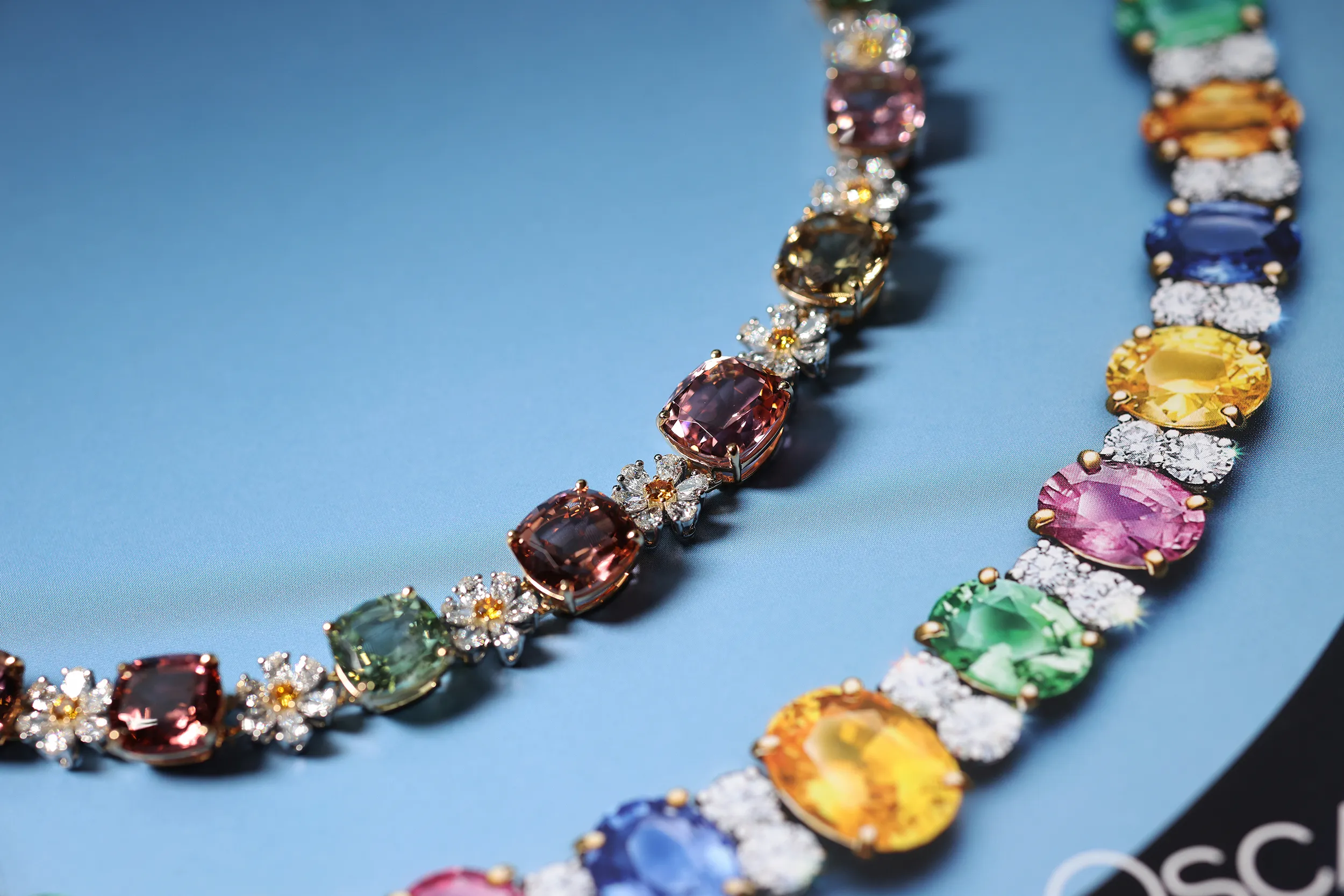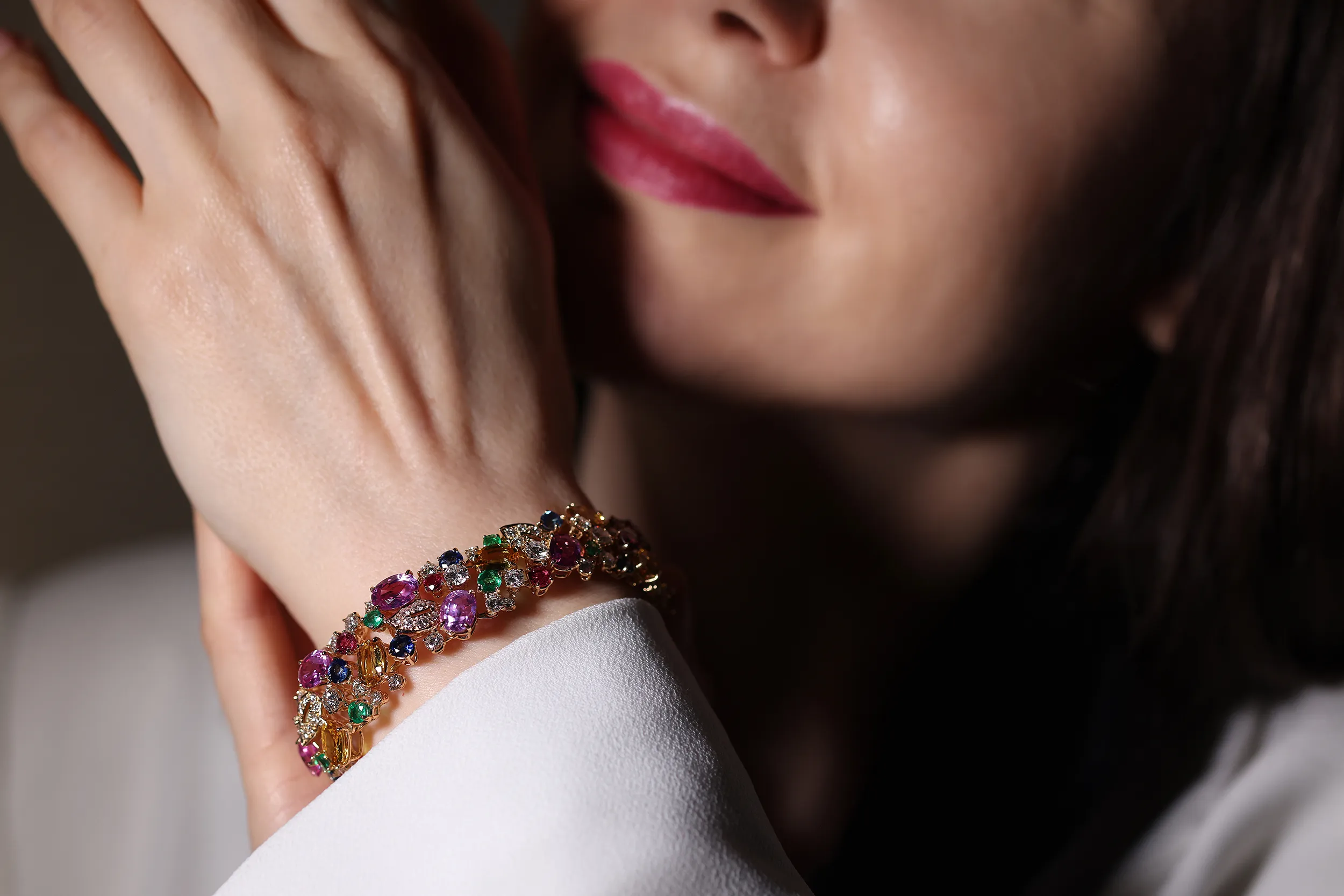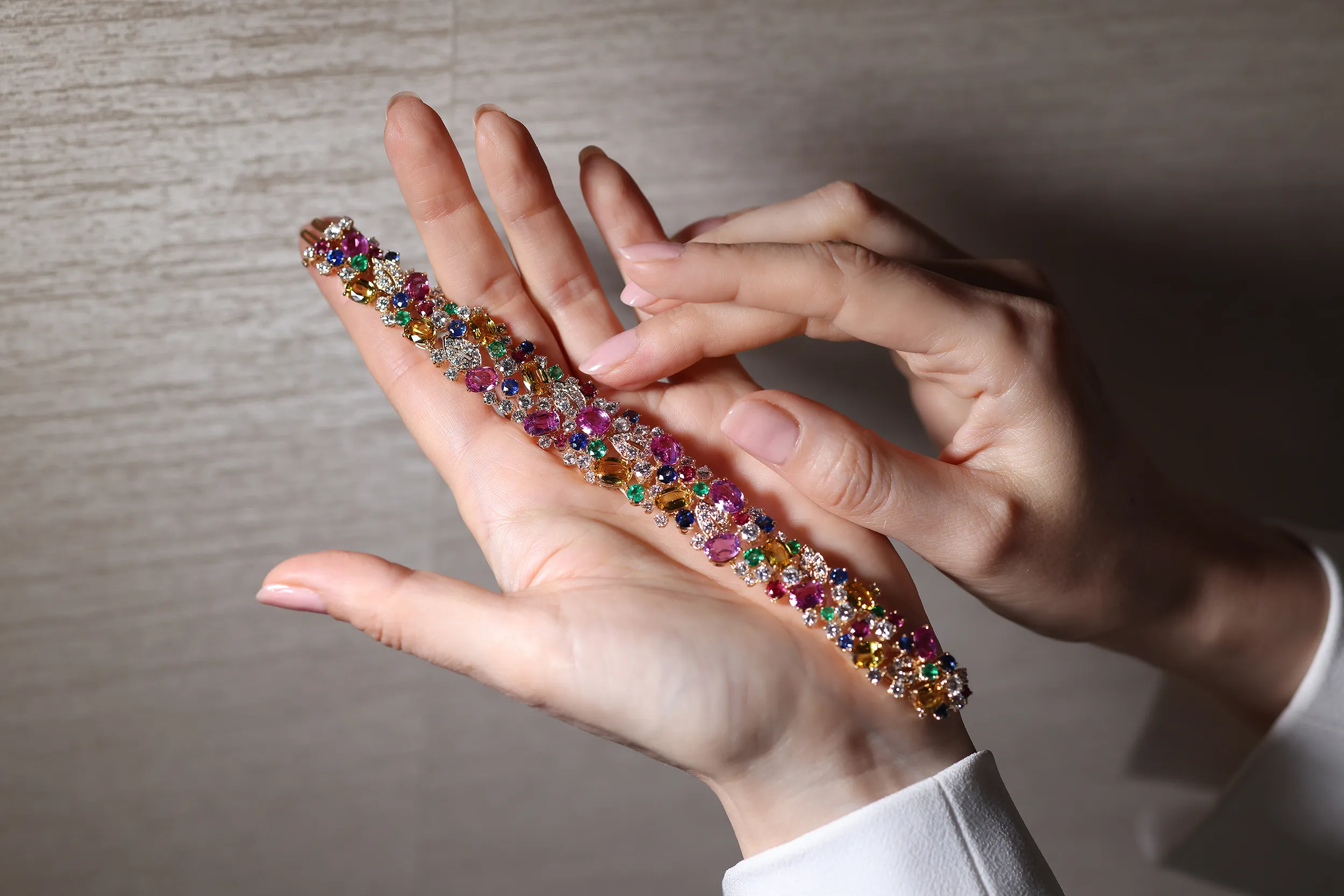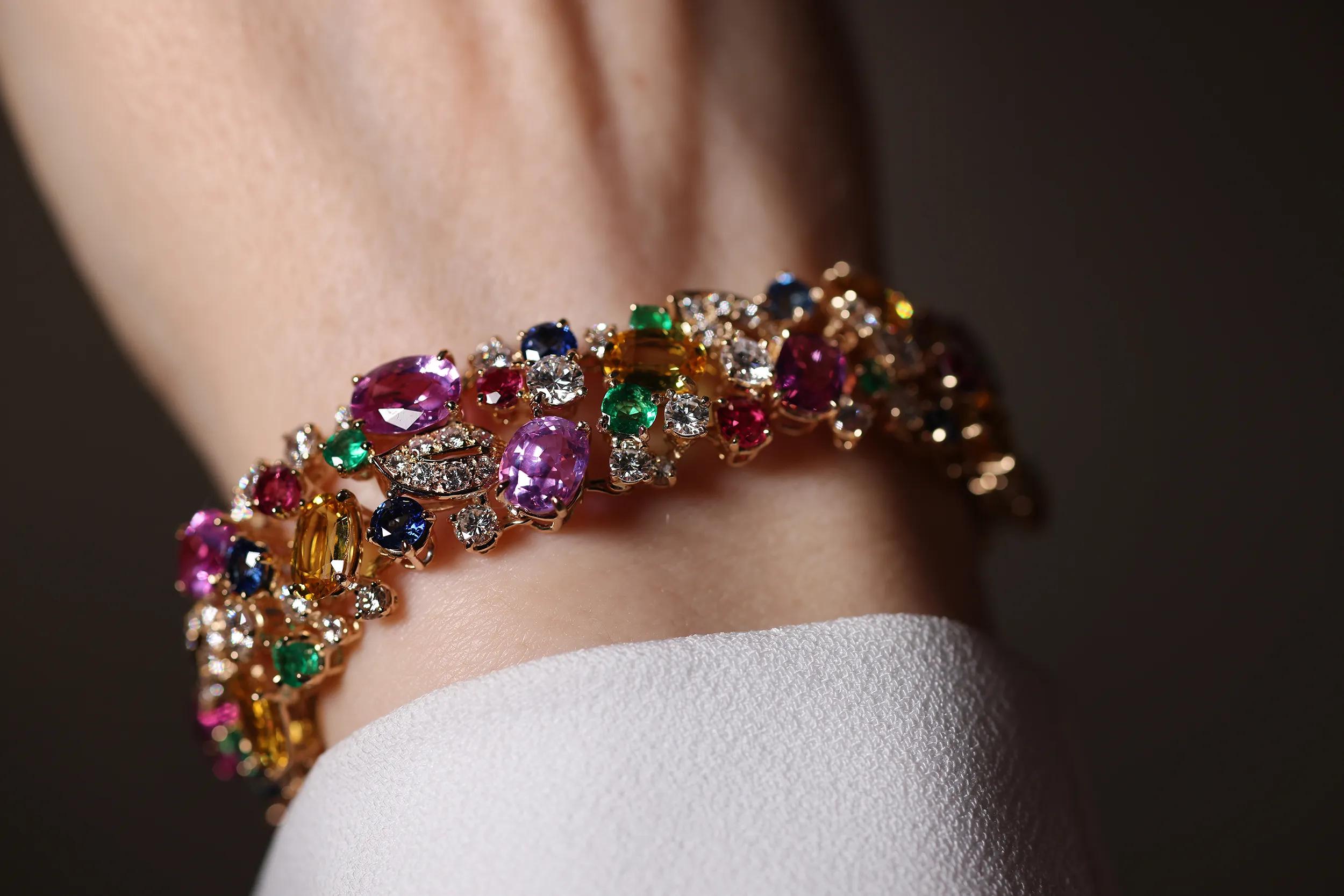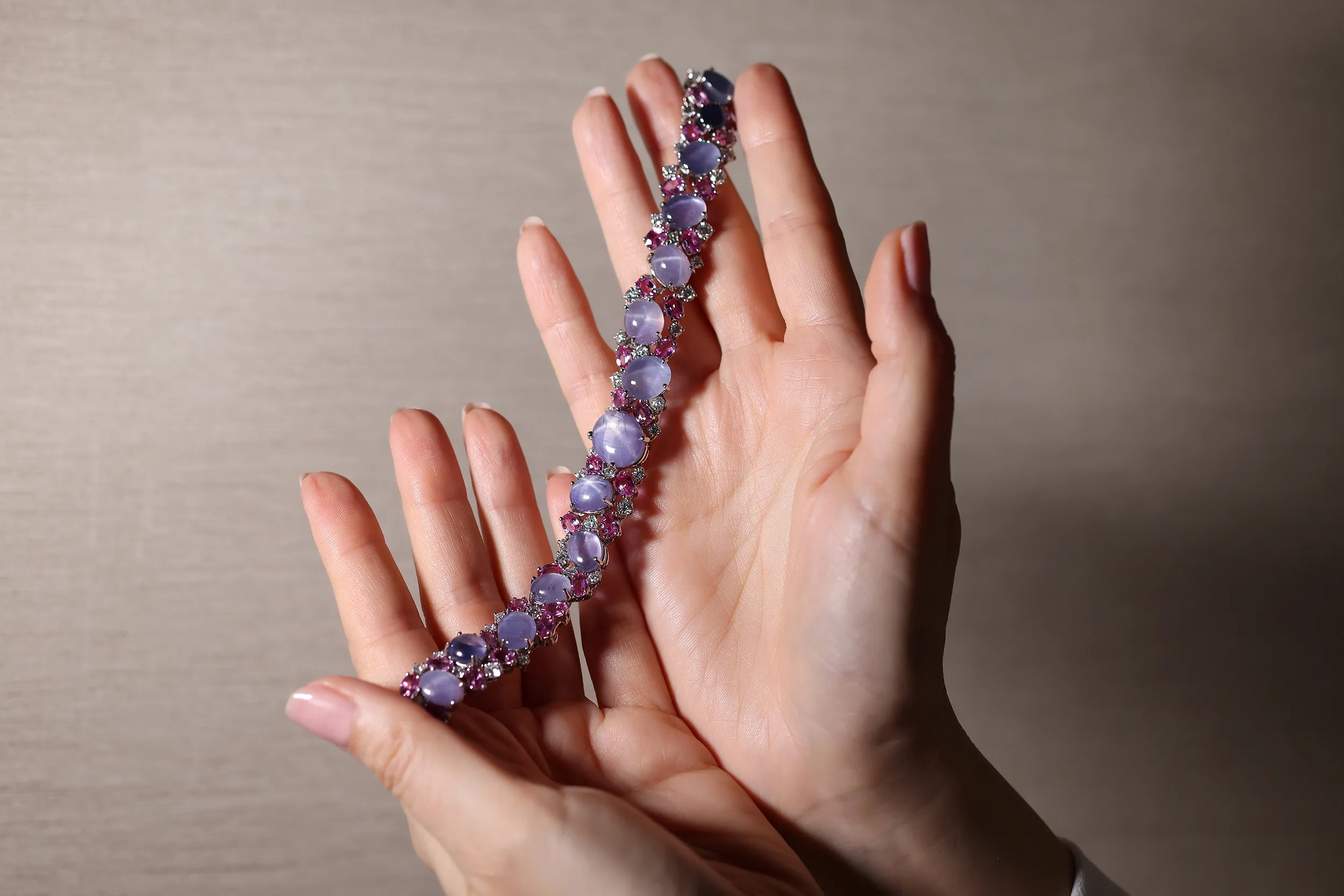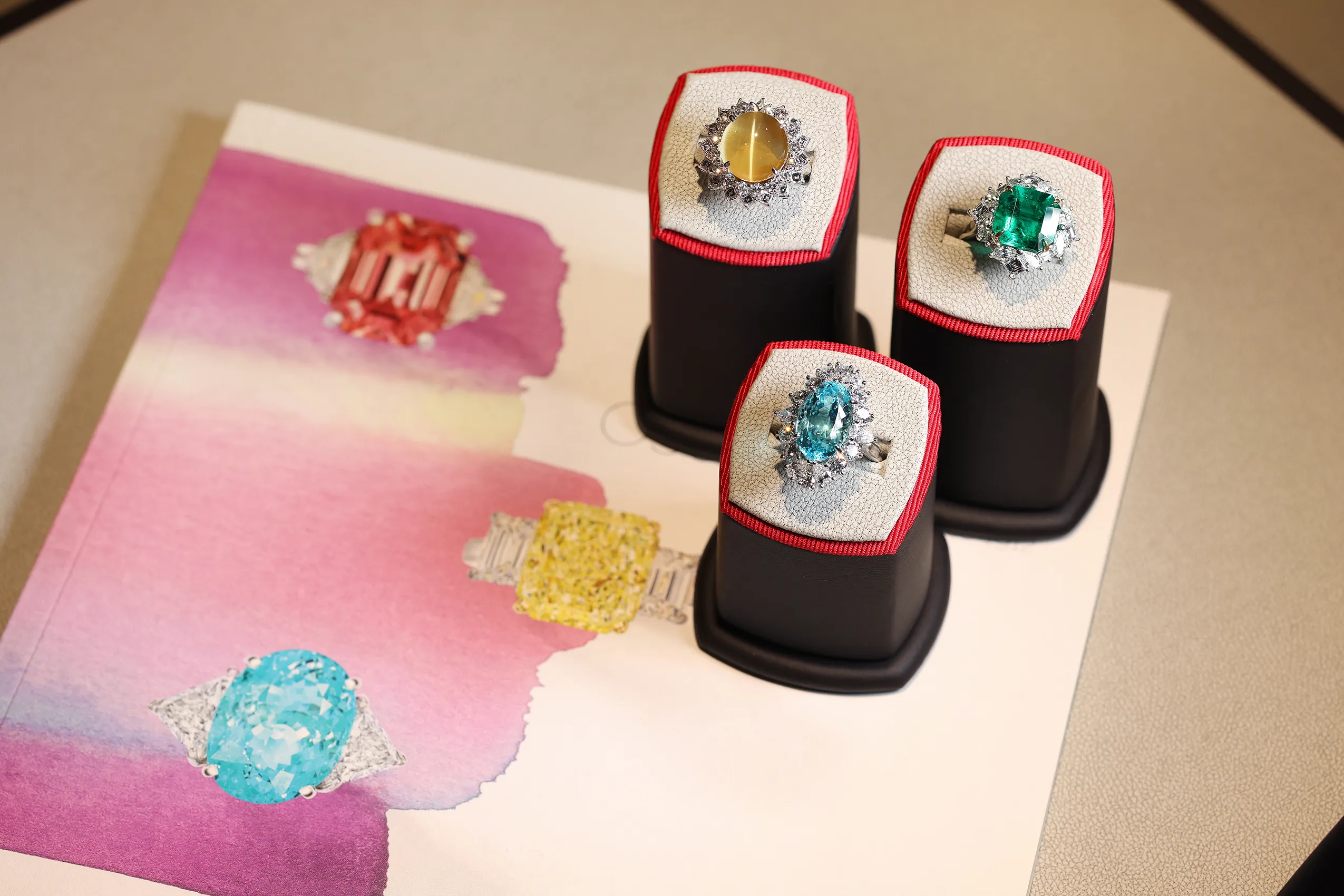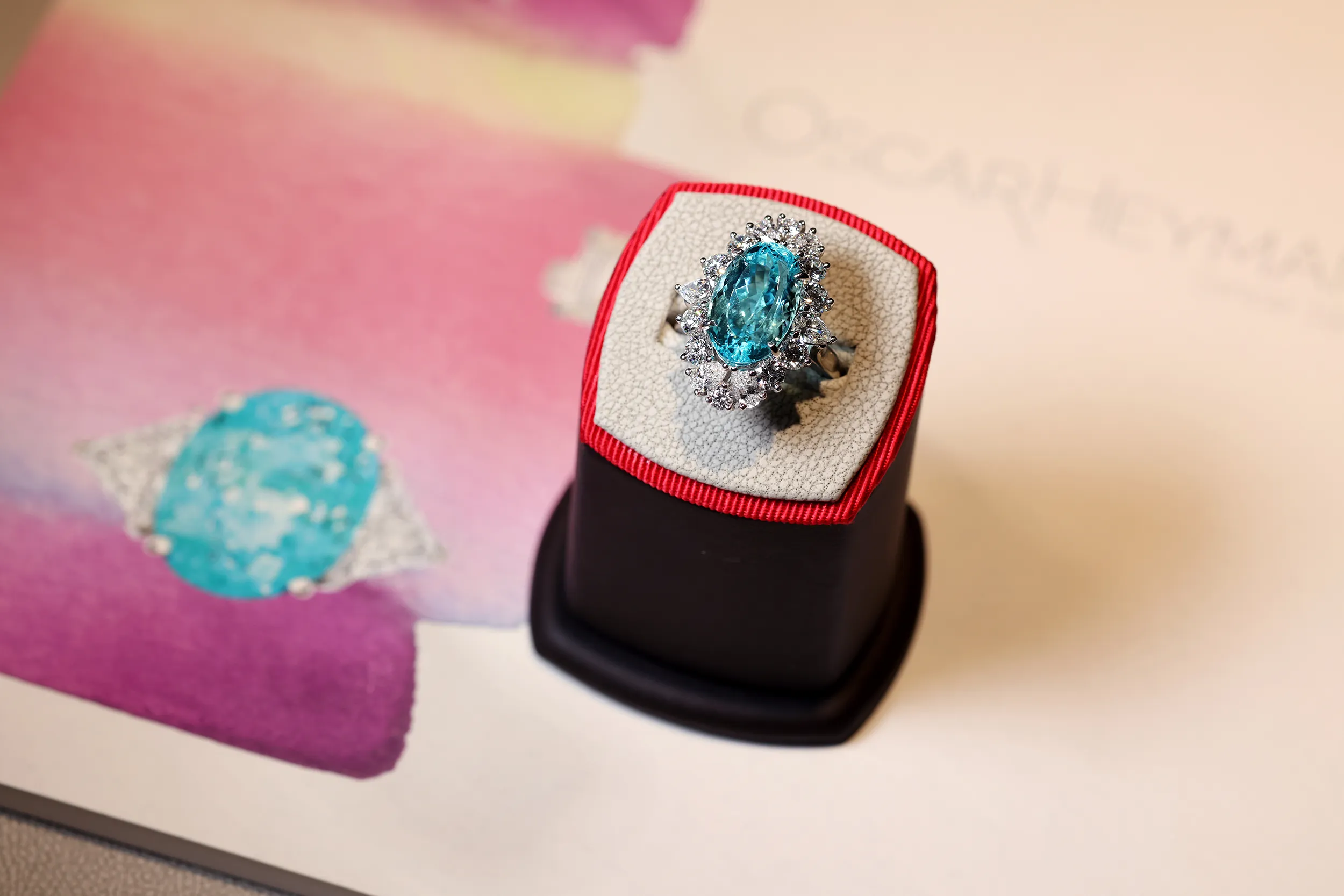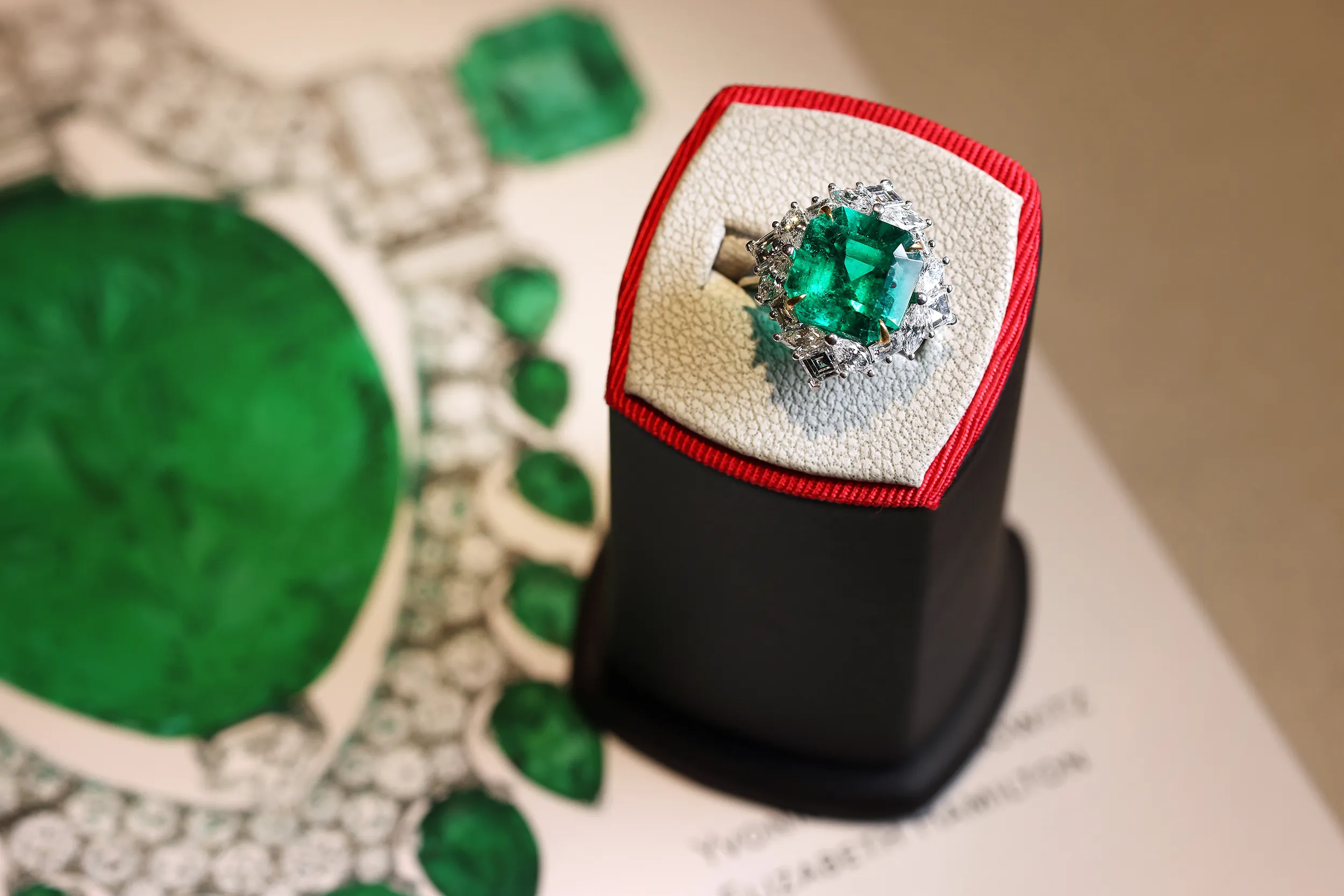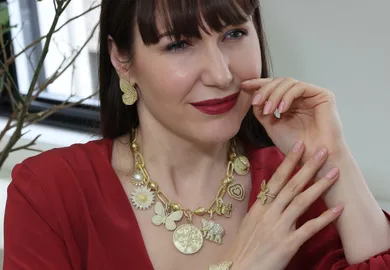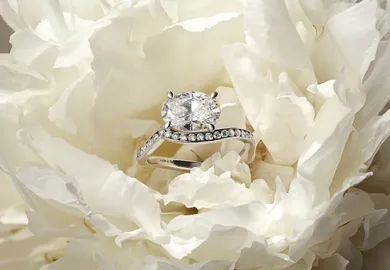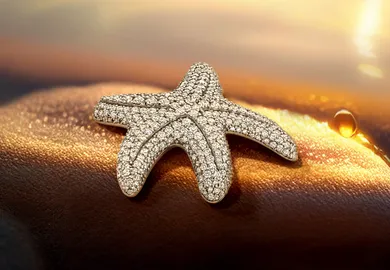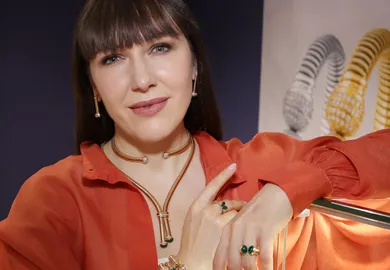
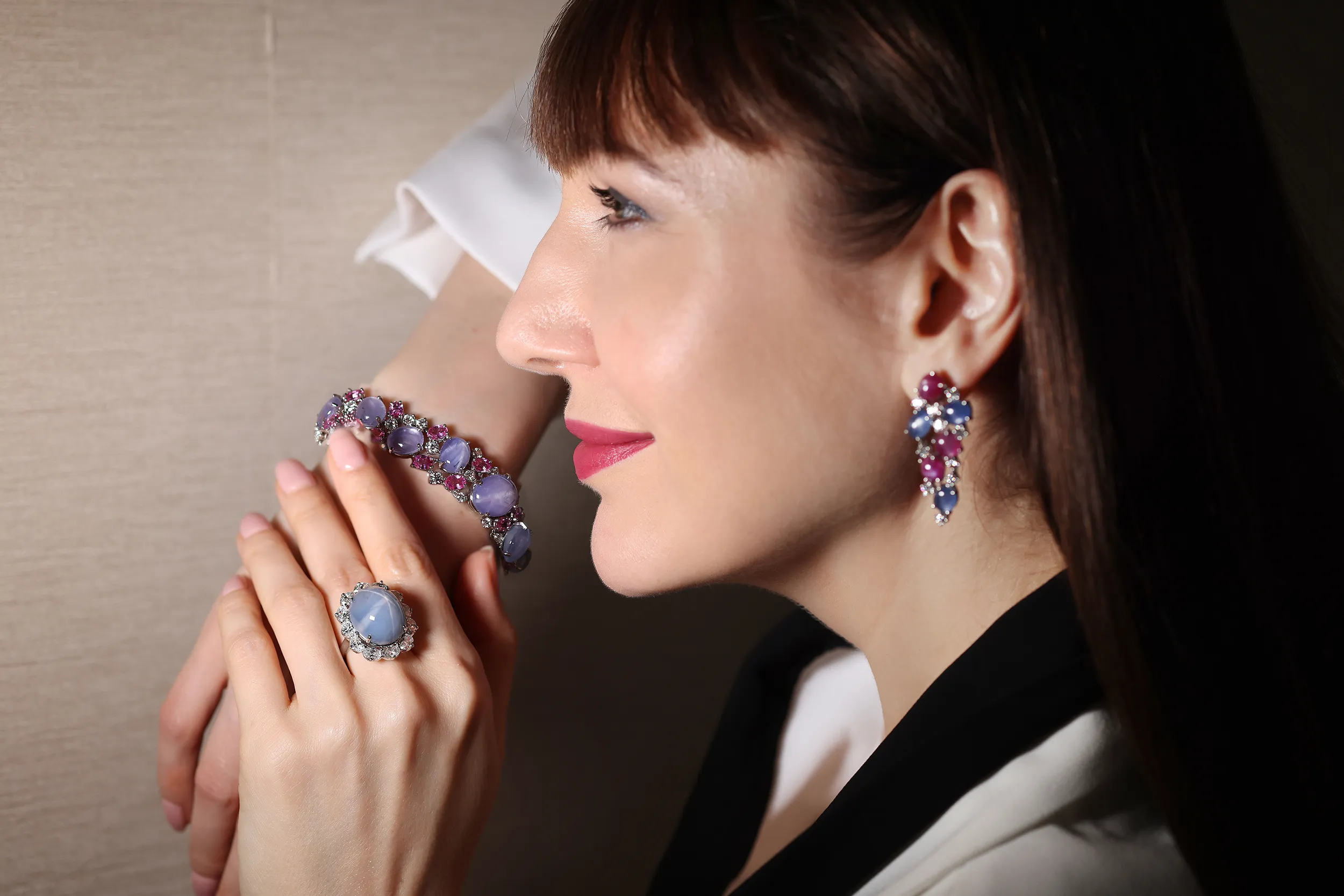
The House That Looks Forward: Inside Oscar Heyman’s New York Atelier
When I first stepped foot inside the Oscar Heyman workshop, perched above the brand’s Corporate Headquarters at 501 Madison Avenue, I felt the undercurrent of purpose and pride that comes from master artisans entirely absorbed in their individual tasks. The grind of decades-old machinery mingled with the whirr of thrumming thread as jewels were polished beneath bright lamps, gemstones scattering flashes of colour across the benches. Time bends here, not because it stands still, but because every conversation, gesture and motion is devoted to creating jewels intended to last forever.
Oscar Heyman has been creating fine jewellery in New York City since 1912, yet what struck me most was its modern spirit. This is a house where tradition fuels innovation rather than restraining it. The brand’s artisans still work by hand, yet the designs and workmanship are resolutely contemporary—think classic sapphire and diamond earrings, reimagined with kite-shaped diamond halos or a timeless Rivière necklace, embellished with the whole spectrum of gemstones in different colours, rather than classic diamonds. These are jewels created for the way collectors live and love today.
As Tom Heyman, President of Oscar Heyman and third-generation custodian of the family legacy, told me: “I want to make jewellery your grandchildren will fight over.” It’s a sentiment that captures the essence of Oscar Heyman today: not nostalgic for what once was but devoted to creating modern classics that will hold their beauty and meaning long into the future.

Marquise diamonds sit between an impressive 25 oval opals totalling over 65 carats in this luxurious necklace that glows with greens and blues. Next to it, a book honouring and celebrating the history of Oscar Heyman, written and published by the Museum of Fine Arts, Boston
Where the Magic Happens: The Oscar Heyman Workshop
Now, let’s discover “where the magic happens”. Above the Madison Avenue office, every Oscar Heyman jewel is brought into being. In the century since the House first supplied pieces to storied names like Cartier, and Tiffany & Co., 501 Madison Avenue remains one of the few places in New York where every stage of creation—from alloying metal and selecting stones to the final polish—still takes place under one roof.

Actual-size hand-painted parakeet maquette sculpture. This technique has been used for 100 years to represent the modulation and dimensionality of a design. The finished parakeet took flight in 1992 after it was completed with rubies, diamonds and a pearl
Around 35 work side by side—metallurgists, goldsmiths, setters, engravers, polishers—each performing a small, precise task that contributes to a greater whole. Platinum and gold are still alloyed on site, die-struck metals are shaped under immense pressure, settings are crafted entirely by hand and gems are recut and engraved within these same four walls. While discovering the large halls with the machinery, I wondered how the building holds all those tons of metal.
We went from room to room to discover all steps of jewellery making, starting with the design office before moving onto the gem room, where I met two in-house gem hunters and one diamond specialist. Then we proceeded one floor up to an enormous workshop, three times the size of any Parisian atelier. In the polishing room, Tom Heyman explained that their jewellers still polish the insides of each setting before a stone is placed, a detail that coaxes a little more light out of every gem.
We polish where no one will ever look. That’s what gives our jewels their extra sparkle. – Tom Heyman
The tool-and-die room, one of the oldest still operating in New York City, rubs shoulders with the new. Decades-old presses and hand-turned wheels share space with CAD tooling and high-tech laser welding machines. This dialogue between old and new perfectly encapsulates Oscar Heyman in 2025. Everything about this vertically integrated workshop gives the House the freedom to innovate and the ability to design, refine and execute without compromise. I haven’t mentioned it yet, but Oscar Heyman was the only jeweller in New York manufacturing the famed Mystery Setting designs for Van Cleef & Arpels in the 1930s, all the way through to the early 2000s when the family sold the brand to Richemont.
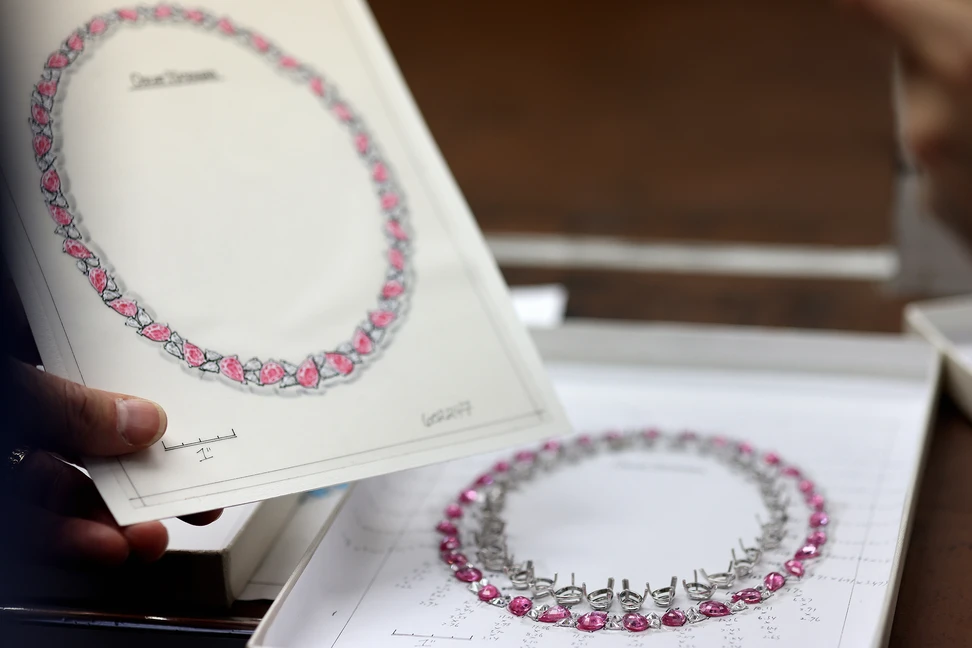
The beginnings of a pink sapphire necklace. On the left is the original design drawing and on the right is a meticulous layout complete with precise dimensions and individually made settings for every stone. From there, each setting is pre-polished and then connected
“Our brand sits at the intersection of old-world craft, rigorous training and modern technology,” says Tom. “It’s important to remain forward-looking, using innovation to enhance precision and efficiency, but never as a substitute for the artistry honed at the bench. The human hand remains at the heart of all we create.” This invisible infrastructure behind every jewel is the reason why, more than a century later, Oscar Heyman remains one of New York’s great jewellery institutions.
Colour as a Modern Language
If the workshop at 501 Madison Avenue is the engine of Oscar Heyman, then colour is its language. As Tom Heyman explains, “Colour has always been the defining signature of the brand—a vibrant through line connecting decades of design and craftsmanship.”
Initially, that meant the classic richness of emeralds, rubies, and sapphires. By the 1950s, when air travel became more accessible, George Heyman, one of Oscar’s younger brothers, began travelling to India, Hong Kong and Sri Lanka—journeys that introduced the atelier to a world of new hues. “With each trip, we were able to expand our spectrum of unexpected tones and rare gems,” recalls Tom.
This pursuit of beauty begins long before a jewel is made. The House’s gem buyers spend up to seven weeks a year travelling to Sri Lanka, Hong Kong, Bangkok and beyond, to the gem and mineral show in Tucson, chasing colour across continents. They seek out the finest examples of sapphires, spinels, tourmalines, aquamarines, tsavorites and rubellites, acquiring them directly from long-standing partners before bringing them back to New York, where they become the building blocks of future designs.
Nowhere is this more evident than in the brand’s 2025 creations, which celebrate the entire palette of rarity. Sapphires in every shade, from cornflower to Padparadscha; Paraiba and bi-colour tourmalines; radiant rubellites; verdant tsavorites; pastel aquamarines; and the gentle blush of angel-skin coral. Despite the riot of tones, there is a remarkable sense of order and harmony, the result of countless hours spent composing multi-colour gemstone suites so that no two hues ever compete.
Creating such balance is a labour of love that’s continually shifting. “You start with a beautiful suite, then you spend months filling in the gaps, finding just the right tone, the right brightness, the right cut. It’s like building a symphony of gemstones,” said Tom.
The Phenomenal and the Invisible
At Oscar Heyman, beauty often manifests in surprising ways. Several of its newest showcases—phenomenal gemstones and invisibly set jewels—celebrate two sides of the same pursuit: nature’s marvels and the ability of human hands to reveal their beauty with extraordinary skill.
The House’s collection of “phenomenal gems” is a celebration of nature’s optical wonders—stones whose unique inclusions and crystal structures interact with the light, creating fascinating phenomena. Star sapphires shimmer with six-rayed asterisms that glide across their domed surfaces; cat’s-eye chrysoberyl reveals a slender band of light that opens and closes with movement; opals ignite with a prismatic play of colour; and alexandrite shifts from green to reddish-purple as day turns to night. A collaboration between geology, time and chance, each gem is unique and unrepeatable.
By contrast, Oscar Heyman’s invisibly set jewels—a House signature for more than a century—showcase mastery born from human precision.
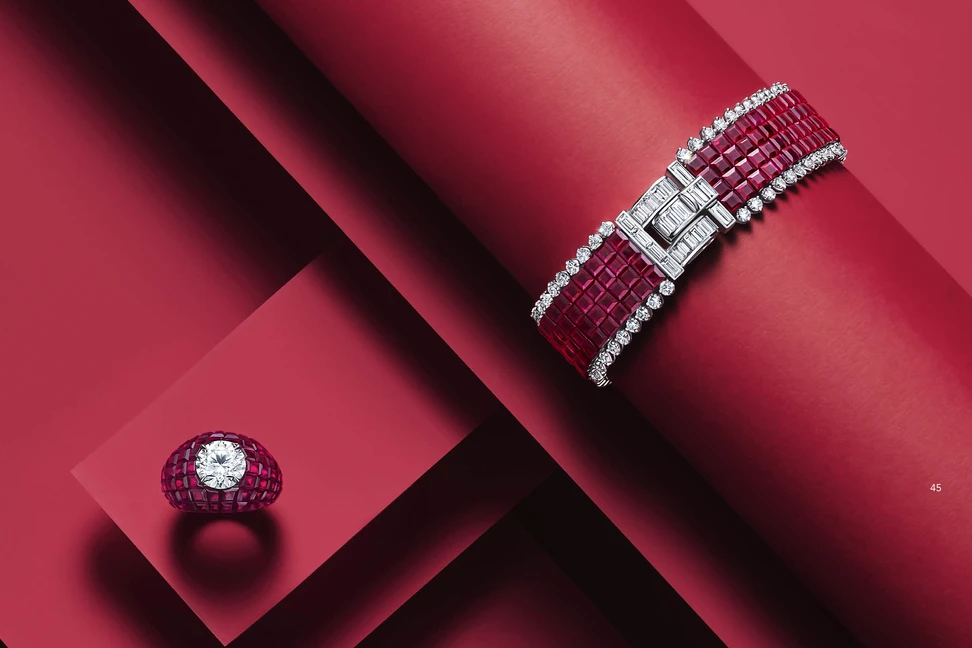
Deep technical skill is required to create Oscar Heyman’s signature invisible set styles. Stones are individually cut and arranged without visible metal. The result is a seamless mosaic with sculptural and dimensional appeal. Here, a flexible bracelet pairs with a magnificent ring. The ring alone features 88 square rubies, each individually cut for its unique home surrounding a 4ct F/VS2 round diamond
It’s almost impossible to make invisibly set jewellery without a jeweller, lapidary and stone setter working side by side. Each stone is cut and slightly tapered to fit without gaps. Sometimes we’ll spend two hours on a single gem. It’s a labour of love, but it’s worth it. – Tom Heyman
Together, these two specialities of the House reflect Oscar Heyman’ ethos of revealing beauty wherever it hides, be it deep within a gemstone or in the unseen artistry of a technique mastered by very few.
The Ultimate Modern Classics
Across the constellation of Oscar Heyman gems, some have remained eternally relevant since the very beginning: sapphire, ruby and emerald, the “big three” that have captivated collectors for centuries. These are the stones that most purely embody the brand’s devotion to exceptional colour. Tom Heyman told me, “Our goal has always been to find the finest examples of each—the bluest sapphire, the richest ruby, the most vivid emerald—and to set them in ways that feel both timeless and new.”
For 2025, the brand presents a series of one-of-a-kind designs that infuse these icons with a bold, contemporary energy. Rubies blaze in a mosaic of brilliance. Emeralds dance along swaying garlands of gold and diamonds. And emerald-cut sapphires form sleek vertical lines, their saturated blues sharpened by the geometry of marquise diamonds. These are the modern classics that have come to epitomise Oscar Heyman—jewels designed to live on, their beauty deepening over time.
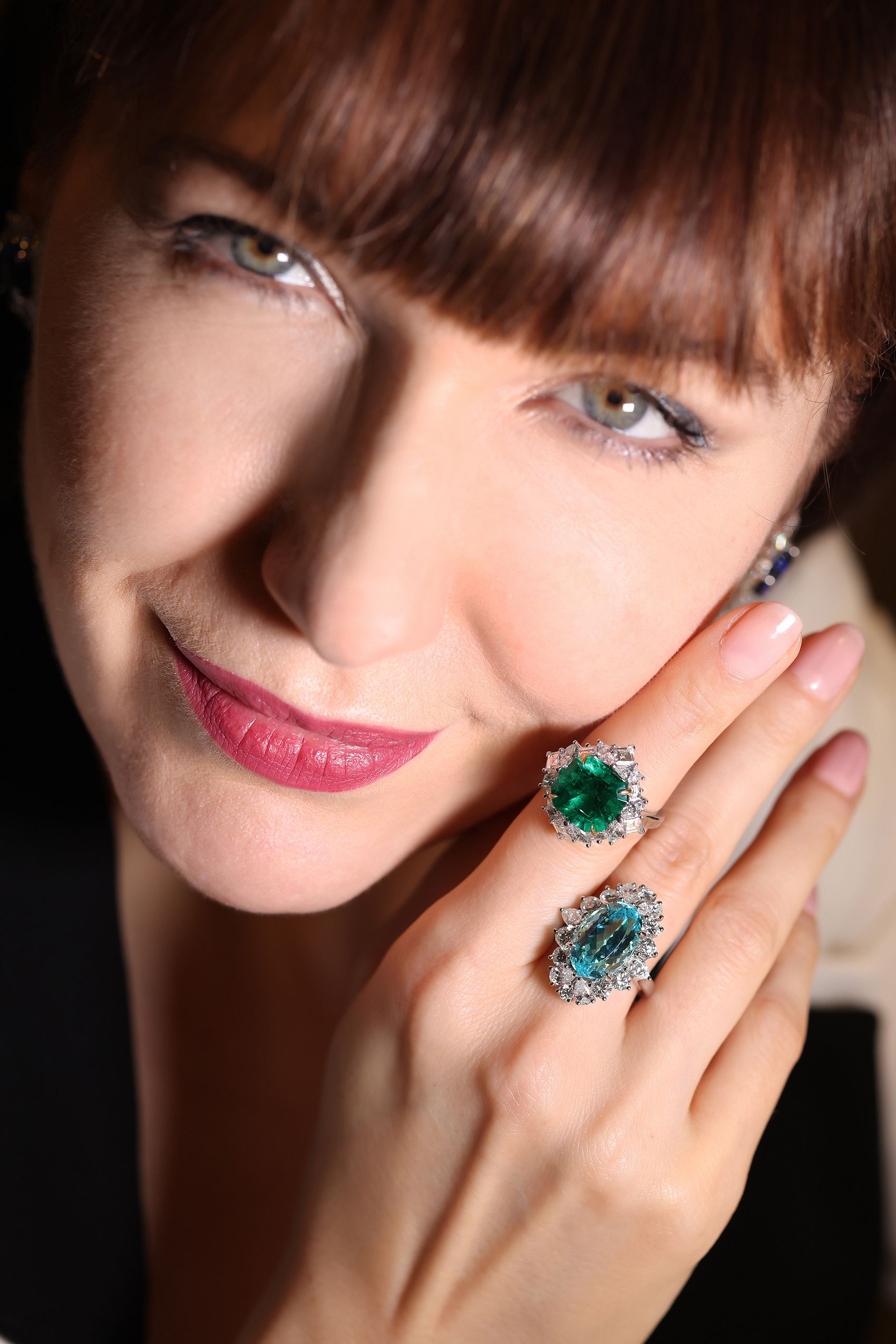
A 7.09ct emerald cut emerald ring stuns next to a show-stopping 8.42ct oval Paraiba tourmaline ring
More than a century after brothers Oscar and Nathan Heyman established the company in 1912, the brand remains what the Museum of Fine Arts, Boston described in its 2017 publication Oscar Heyman: The Jewelers’ Jeweler as the “unsung masters of American jewellery”. From the Diamond District, where the Heyman brothers laid the foundations of the House, to Madison Avenue today, New York continues to define Oscar Heyman’s identity—a city where creativity flourishes and artistry and innovation live side by side.
Stepping back onto Madison Avenue, I carried with me a renewed admiration for a House that honours its origins by creating with purpose—a reminder that heritage lives not in the past, but in the making of what comes next.
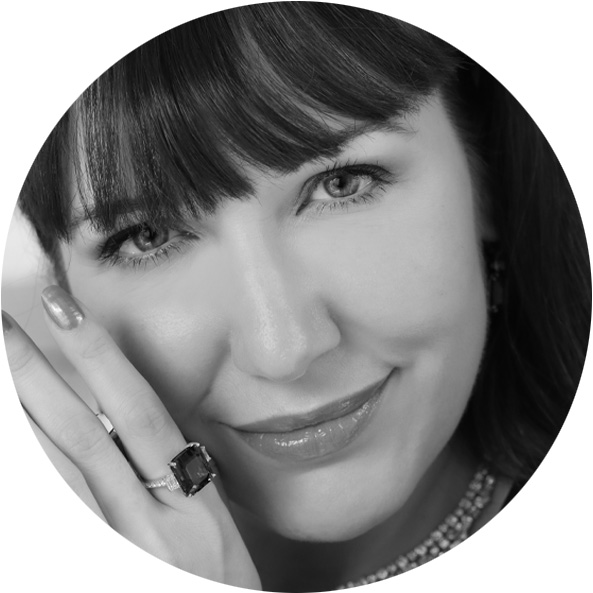
WORDS
Katerina Perez is a jewellery insider, journalist and brand consultant with more than 15 years’ experience in the jewellery sector. Paris-based, Katerina has worked as a freelance journalist and content editor since 2011, writing articles for international publications. To share her jewellery knowledge and expertise, Katerina founded this website and launched her @katerina_perez Instagram in 2013.
